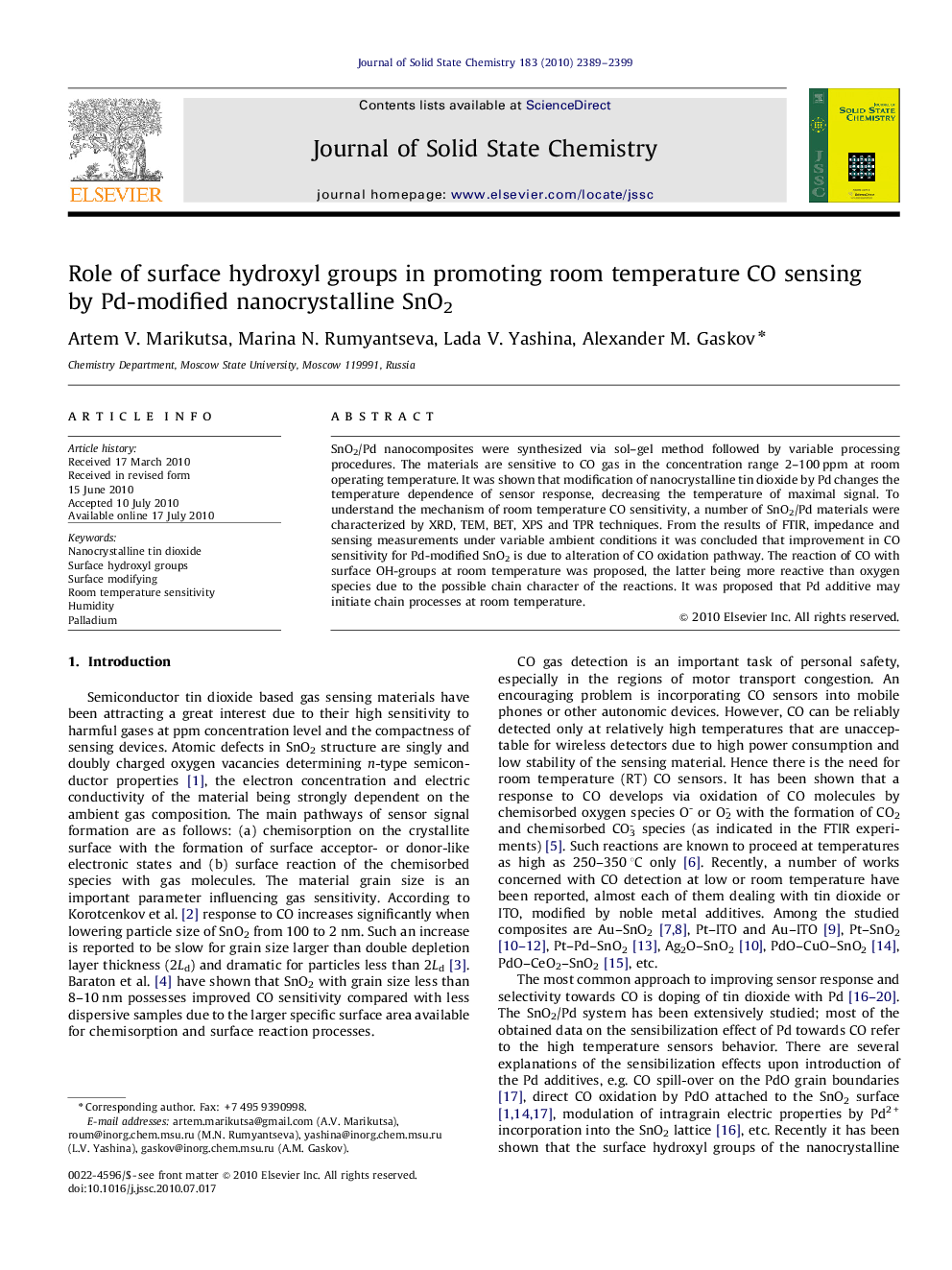| کد مقاله | کد نشریه | سال انتشار | مقاله انگلیسی | نسخه تمام متن |
|---|---|---|---|---|
| 1332347 | 979038 | 2010 | 11 صفحه PDF | دانلود رایگان |

SnO2/Pd nanocomposites were synthesized via sol–gel method followed by variable processing procedures. The materials are sensitive to CO gas in the concentration range 2–100 ppm at room operating temperature. It was shown that modification of nanocrystalline tin dioxide by Pd changes the temperature dependence of sensor response, decreasing the temperature of maximal signal. To understand the mechanism of room temperature CO sensitivity, a number of SnO2/Pd materials were characterized by XRD, TEM, BET, XPS and TPR techniques. From the results of FTIR, impedance and sensing measurements under variable ambient conditions it was concluded that improvement in CO sensitivity for Pd-modified SnO2 is due to alteration of CO oxidation pathway. The reaction of CO with surface OH-groups at room temperature was proposed, the latter being more reactive than oxygen species due to the possible chain character of the reactions. It was proposed that Pd additive may initiate chain processes at room temperature.
Nanocrystalline SnO2 modified by PdO/Pd clusters exhibit high CO sensitivity at room temperature. An extensive study revealed surface OH-groups participation in CO oxidation on SnO2 leading to enhanced sensitivity at low operating temperature (25–150 °C). PdO/Pd clusters supposedly initiate a chain of CO reactions with surface hydroxyls.Figure optionsDownload as PowerPoint slide
Journal: Journal of Solid State Chemistry - Volume 183, Issue 10, October 2010, Pages 2389–2399